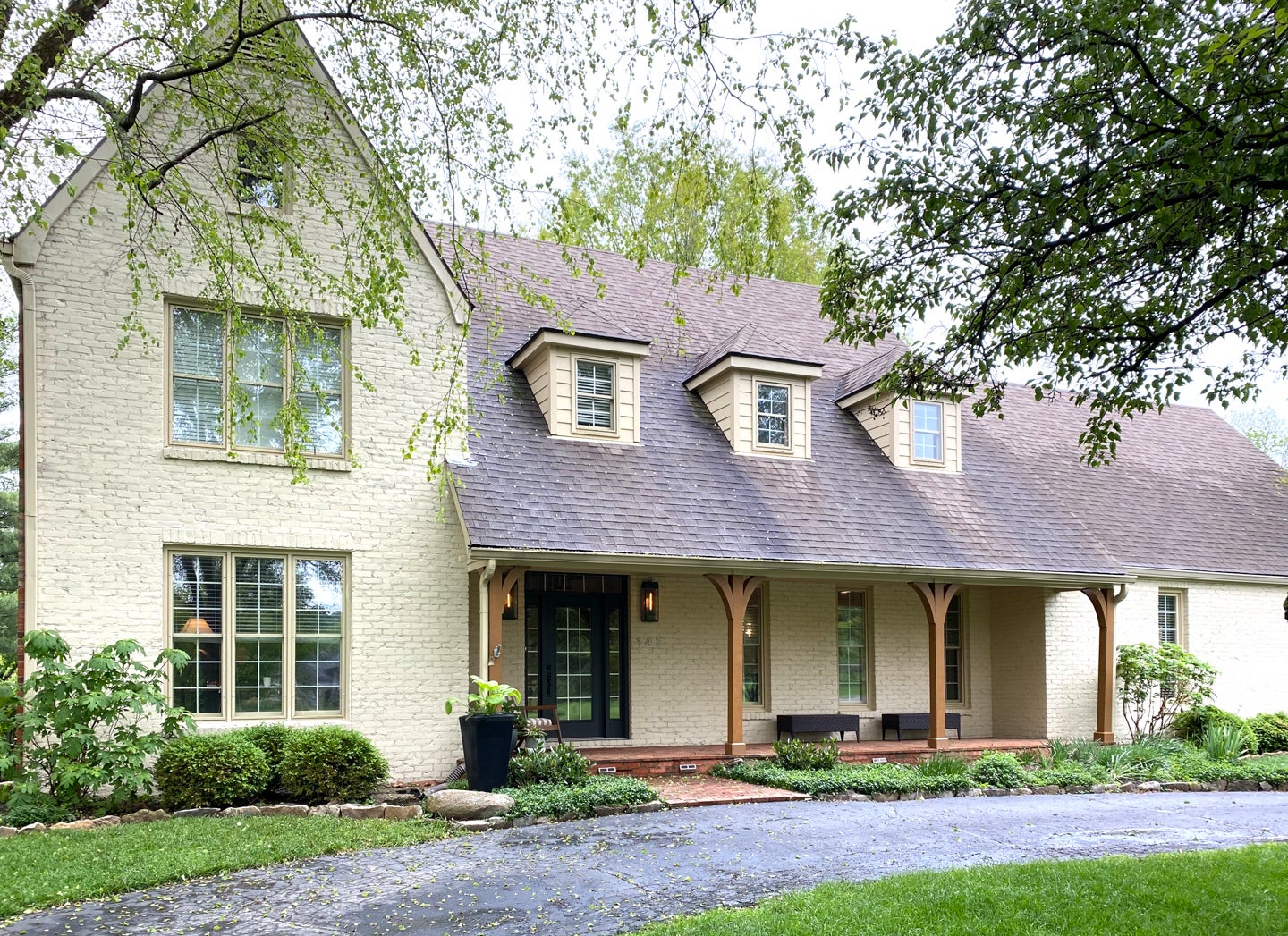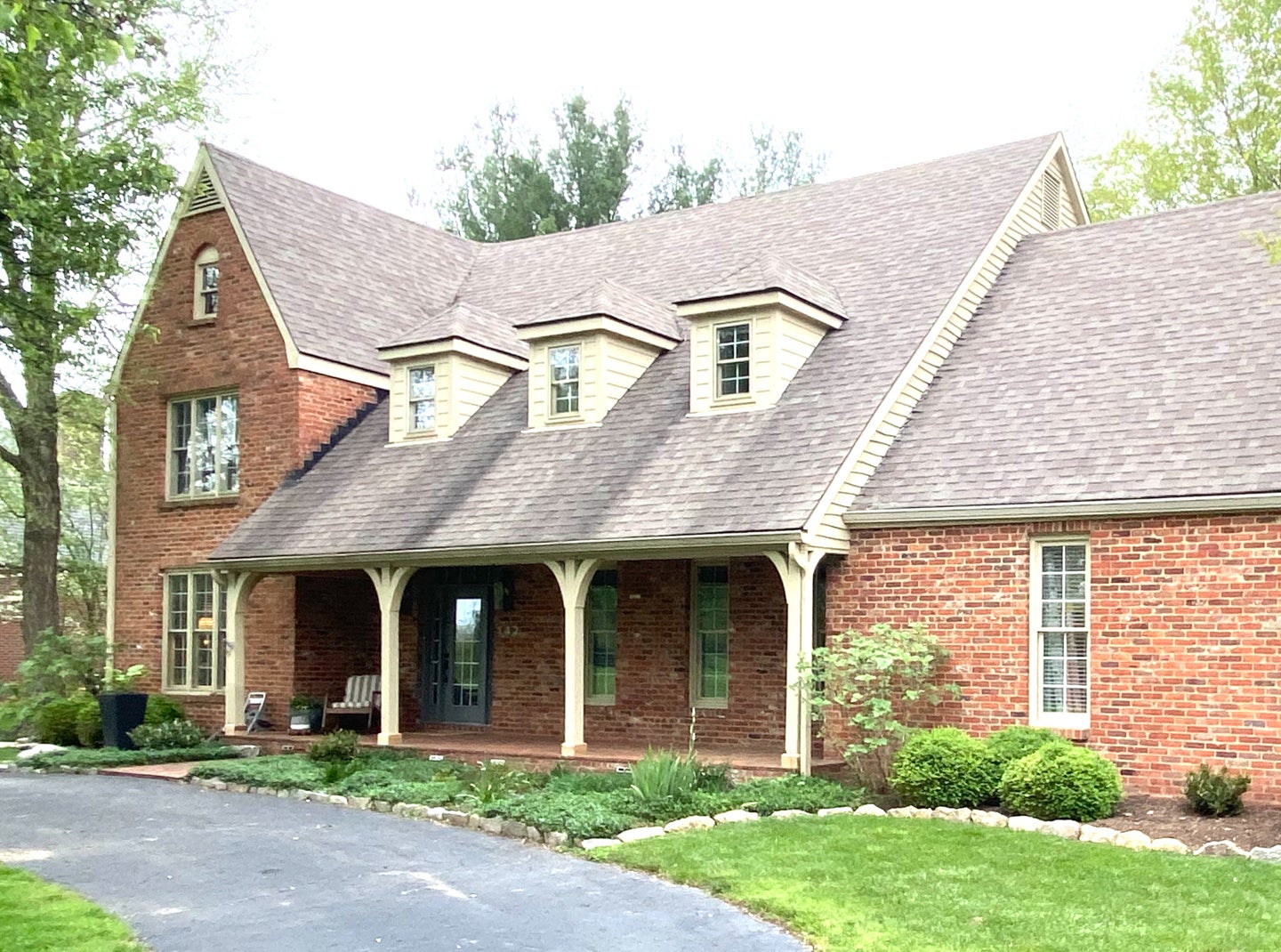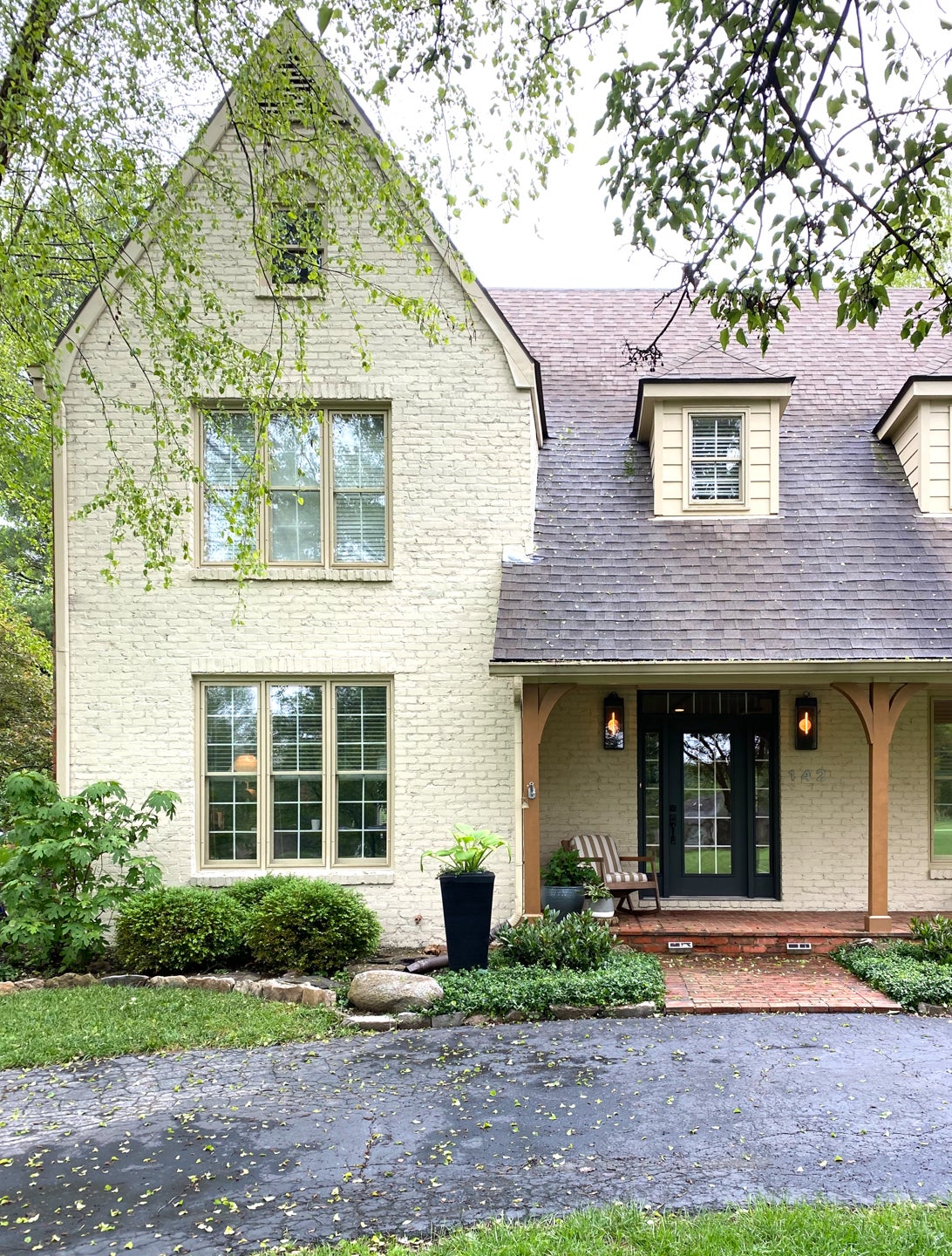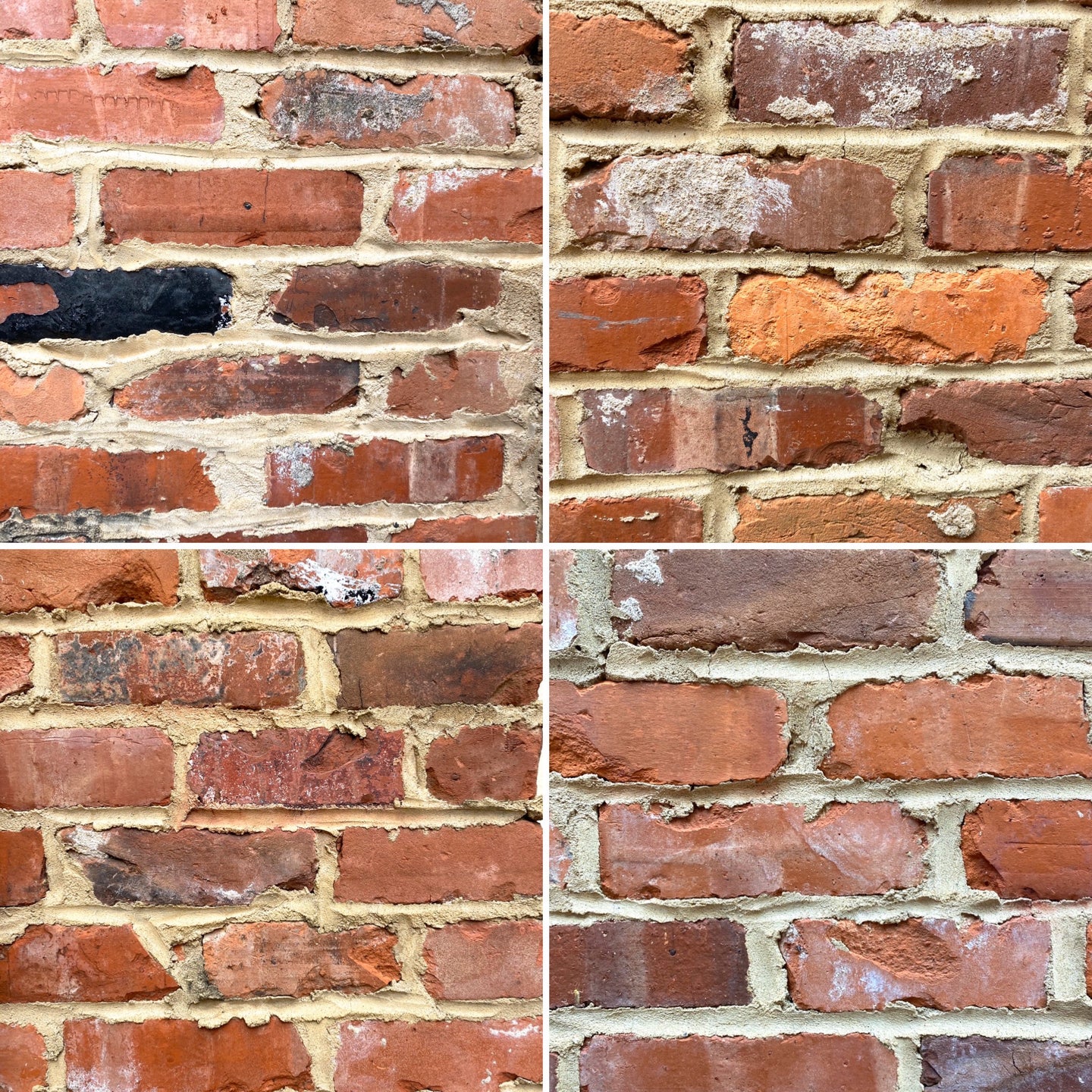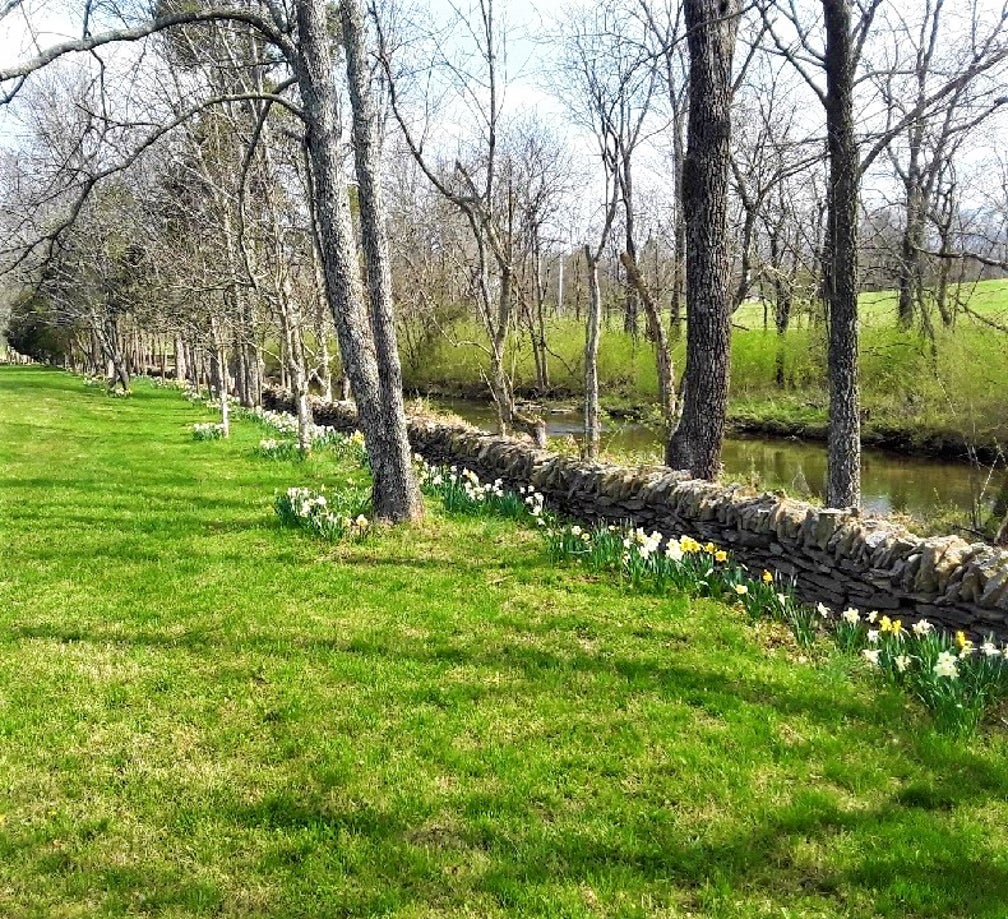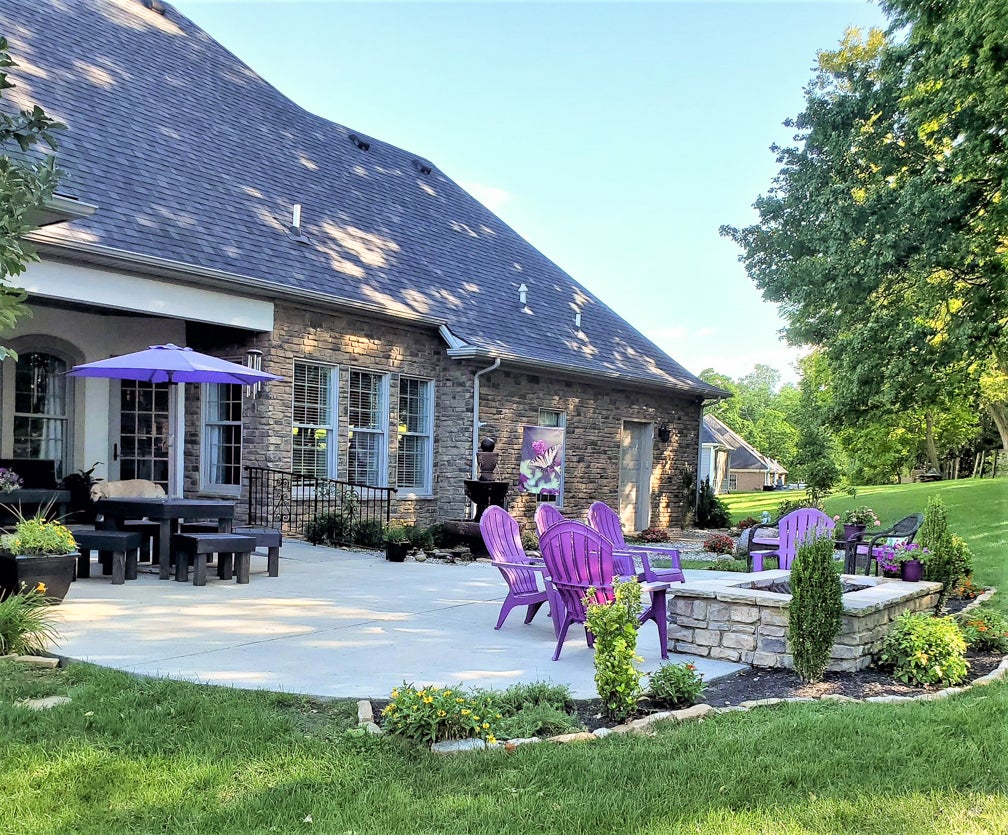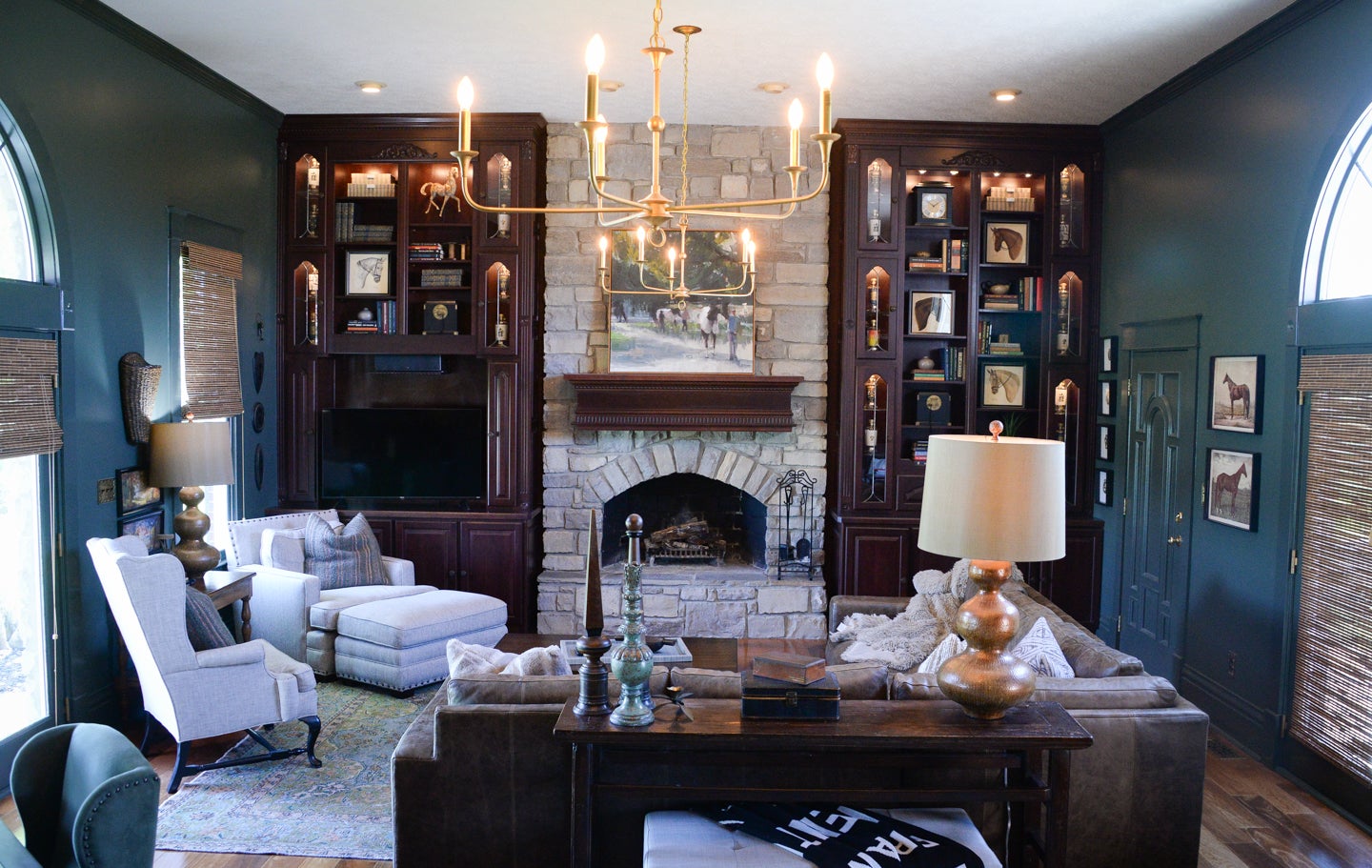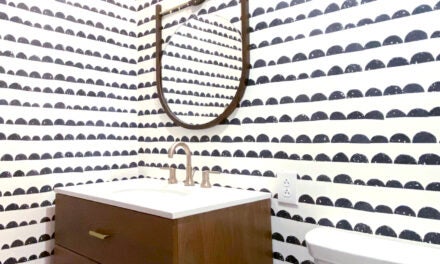My husband, Tom, and I have renovated nearly a dozen homes over the past few years. Four years ago, we had just finished a major master suite addition of our home when we unintentionally sold it out from under ourselves. We found ourselves in a modified Cotswold-Tudor style home. The 40 year old home had interesting character — quirky wavy siding, reclaimed schoolhouse brick and gloppy (no other way to describe it) mortar. The unique construction told a fairytale castle-like story.
As an interior designer with an affinity for painted brick, the urge to correct, enhance and coverup the less than perfect brick applications of the home, presented a pressing urge to paint. Brick, in my always neutrally guided mind, is a surface — something comparable to a blank wall. A well- chosen coat of paint allows the texture to come through without the “dyed in the clay” color limitations of natural brick. The painted brick concept allows uneven shades of random bricks to be unified into a single color tone. But most discussions centered around whether to paint brick are fraught with controversy. For natural brick aficionados, painting is a last resort. They like the earthy feel of natural brick. But sometimes, painting the brick is a method worth pursuing.
Beautiful homes always stay within an intended aesthetic. The design and decision making process for this home began by following the original architectural theme and the quiet elegance it portrayed. Corrections in color and texture were key to the dramatic results. The transformation may convince a few “brick people” that painting brick is sometimes the right answer.
- The original. Built in the late 1970s, the uniquely designed residence features wavy edge rustic siding and highly textured brick and mortar. Architecturally, it references an English Cotswold Cottage or Storybook Style with steeply pitched roofs and dormers. The use of multi-color used brick contributed little to the theme. The drippy mortar was a distraction.
- The process. Because brick is naturally porous, a specialized paint formula designed to cover and protect brick is important. Step one involved a deep clean pressure washed surface. Step two was the repair of cracks and crevices in the aging siding. The third step included the spraying (with an applied roller) of paint onto the brick. Step four provided new paint for the trim and siding. Finally, accent paint was applied to the front door and columns.
- The color. The architectural style of the house dictated the base color. By staying true to the Cotswold cottage theme, white brick would not be appropriate. The color was also guided by the existing beige color of the gutters, downspouts and trim that were not being painted. Sherwin Williams Macadamia (SW6142) was chosen for the siding as a close color match to the existing trim. Sherwin Williams Softer Tan (SW6141), one shade lighter from the trim was used for the brick. The combination creates a soft neutral affect with just a slight contrast.
- The accents. To add interest to the neutral palette, a soft black, Sherwin Williams Iron Ore (SW7069) was used for the front door. By using a soft versus harsh black, a high contrast was avoided. The previously painted braced columns were never the feature needed for the front porch. Painting the four columns a traditional timber brown (SW6096 — Jute Brown), for a natural wood look, adds a third color and dimension.
- The result. The neutral palette provides a calm, neutral appearance more in line with the architectural theme of a Cotswold Cottage. The painted brick and mortar support previously unseen texture and are no longer a distraction. The architectural lines of the home are now the feature. The overall affect is beautifully stated elegance befitting an English Cottage.

